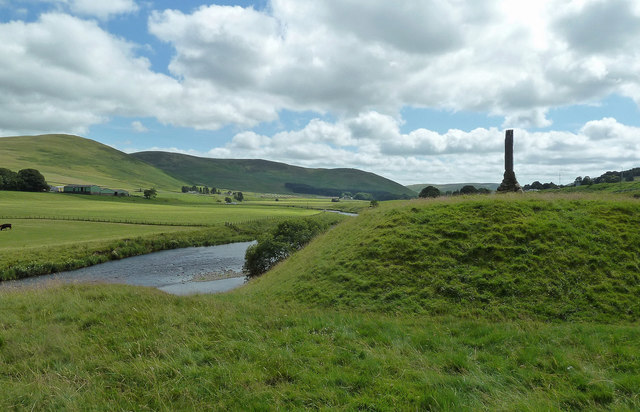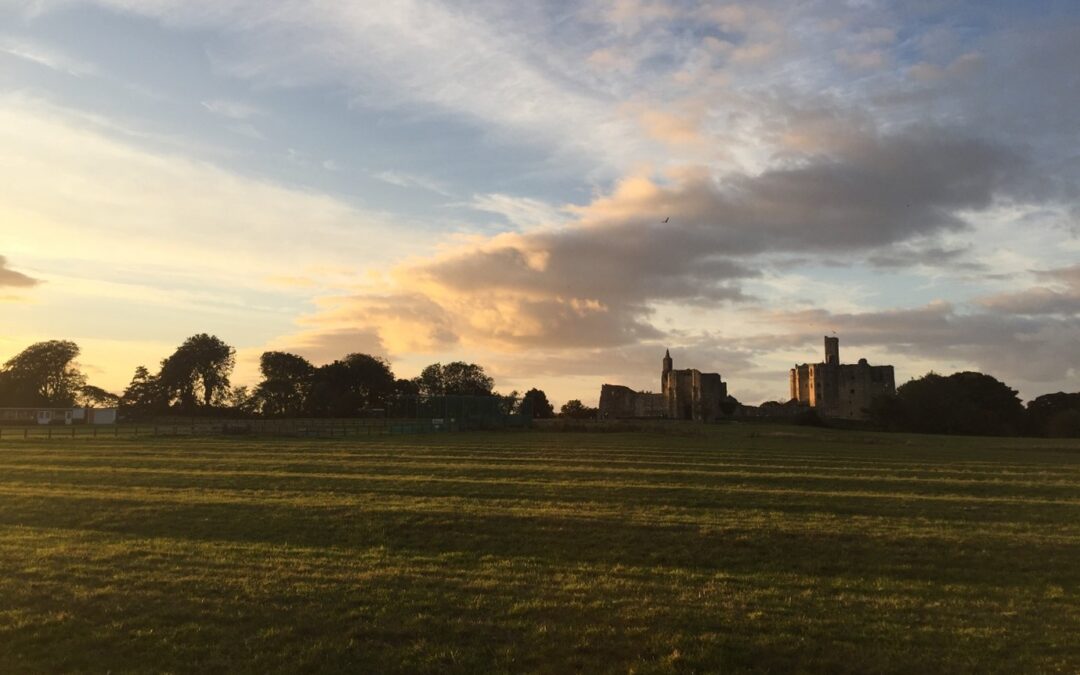Will Wyeth has recently joined the Advisory Board of the IHR’s Centre for the History of People, Place and Community as an ECR member. In this blog he talks about how he came to be an historian of castles.
Underwhelming Motorway Castle
Quite early on in my Ph.D. I did a tour of two dozen or so castles in south-west Scotland with one my supervisors and his colleague. We set out early on a cold morning from Edinburgh heading south-west into upper Clydesdale. As we neared the nodal motorway stop at Abington, I was told to boot up: “We’re here.”
I’d come to castles, indeed medieval British history and archaeology, entirely new. My undergraduate and master’s degrees were decidedly late Roman. But as we drove through the valleys of Clydesdale, I wasn’t in entirely unfamiliar disciplinary territory. My supervisor, in pointing out farms with names of medieval, Flemish origin, talked about the landscape through a lens I was familiar with: broad, holistic, drawing on all sorts of disciplines.
Back at Abington, we huddled to the edge of the motorway and scrambled across the dual carriageways between the streams of cars and lorries, hopping over the crash barrier to get to the field beside the River Clyde. Whenever I think of the public history of castles, and indeed of the medieval past, I think of my first reaction to reaching the motte-and-bailey at Abington: “Is this it?”

via Wikimedia Commons
At face value there isn’t much to Abington. The earthen mound (or ‘motte’) at its core is cut off from the flat area around it by deep ditches, and it backs onto a drop to the Clyde. The crescentic enclosure (or ‘bailey’), built hard by it, is defined by curving banks and faint ditches. But there are no standing buildings and next to no recorded history.
Listening to my Ph.D. supervisor and his colleague discussing the earthworks of Abington, I could begin to feel it coming to life. The profile of the banks, built up of layers of scraped earth piled high, aching backs and arms; the platform of the mound, hosting a fine timber building; the ghostly pillar of its chimney and hearth smoke rising up in the middle of the valley. I could almost feel the texture of its rendered walls, the rushes catching on my feet as I walked in the hall. I could hear the whinnying of horses and smell the hay and manure. I could hear the dull thud of dough being pounded into bread loaves, the crashing of a cart of firewood being delivered.
What I couldn’t see in the same detail were the people: I knew they were there, but I saw them in a similar vein, as wonderfully vivid fixtures. They were general and miscellaneous.
By the end of my Ph.D. I’d decided that what was most important about understanding castles was about the people who built them and lived in them. I found this was important because it placed people and the importance of place at the centre of how the remains of the past are understood by us today. If one could understand people, their motives and aspirations but also how they understood their world, how their community operated and changed, one could really understand castles as they were.
Peopling the Past
When I joined English Heritage—a fantastic charity which cares for hundreds of historic sites and properties—I brought this way of understanding the past in academic circles into the public history of castles. At Stokesay Castle, we mixed biographical details of the castle’s inhabitants with a folklore-inspired trail about giants and buried treasure. At Richmond, we took this a step further. We directly connected attested figures from the Richmond Castle’s history—its builder; an English princess; a Breton earl and Breton duchess; a lowly servant; a keeper of dogs; a bear-ward; a monk—with parts of the castle, to express to visitors how important the invisible people were to understanding the castle. My most recent project, at Warkworth Castle, developed this thinking further. A visitor to Warkworth today is invited to follow one of five trails across the castle’s ruins, rooms and passageways, following an historic figure around the castle on a day in their life, in the process also grasping the wider, ‘global’ event at hand. Each of the five people represented at the castle likely knew of each other and are best understood as representative of the castle’s household and ordinary life around the year 1400.

But it was especially working on Warkworth that I began to question my framework for castle-thinking and interpretation. The process of leveraging the lives of the long departed is fraught with complications, not in the least the ethical problems of developing a fully fleshed-out personality, the ideal for a narrative voice at historic properties, where the evidence is slim.
Building Castle Stories
I have begun to think more critically about my voice as an author of history, in my capacity researching and writing for the public history of castles. In creating the audio-guide for Warkworth, we worked with a local resident whose ancestors had lived at the castle as guardians. Alongside learning some incredible nuggets of recent Warkworth history, I came to understand the many ways in which the public history of castles was top-down in ways I’d not appreciated, even when efforts like mine (see above) drew on the idea of telling stories from below. Part of this draws on my own growing understanding of the construction of medieval pasts formed in the 19th century and its enduring legacy today. Part of this relates to the development of the heritage industry in the UK. Part of this also relates to the implicit elite-centrism of castle studies as a discipline. These three elements are things I am often wrestling with day-to-day.
In my role as an ECR rep on the Advisory Board of CHPPC I look forward to bringing my experience in the heritage sector to bear. I also look forward to hearing more about the fantastic work of the CHPPC and working with fellow ECR reps and board members.

Will Wyeth is a Properties Historian at English Heritage. He completed his Ph.D. at Historic Environment Scotland and the University of Stirling in 2018, on the subject of early stone castles in Scotland. He has given papers, undertaken freelance research and published on aspects of the history of castles in Scotland and England.

